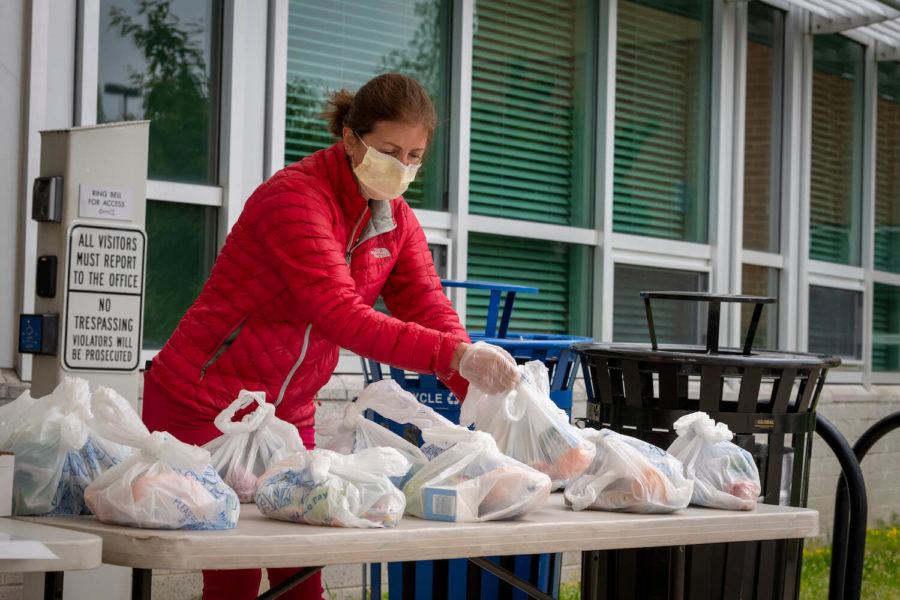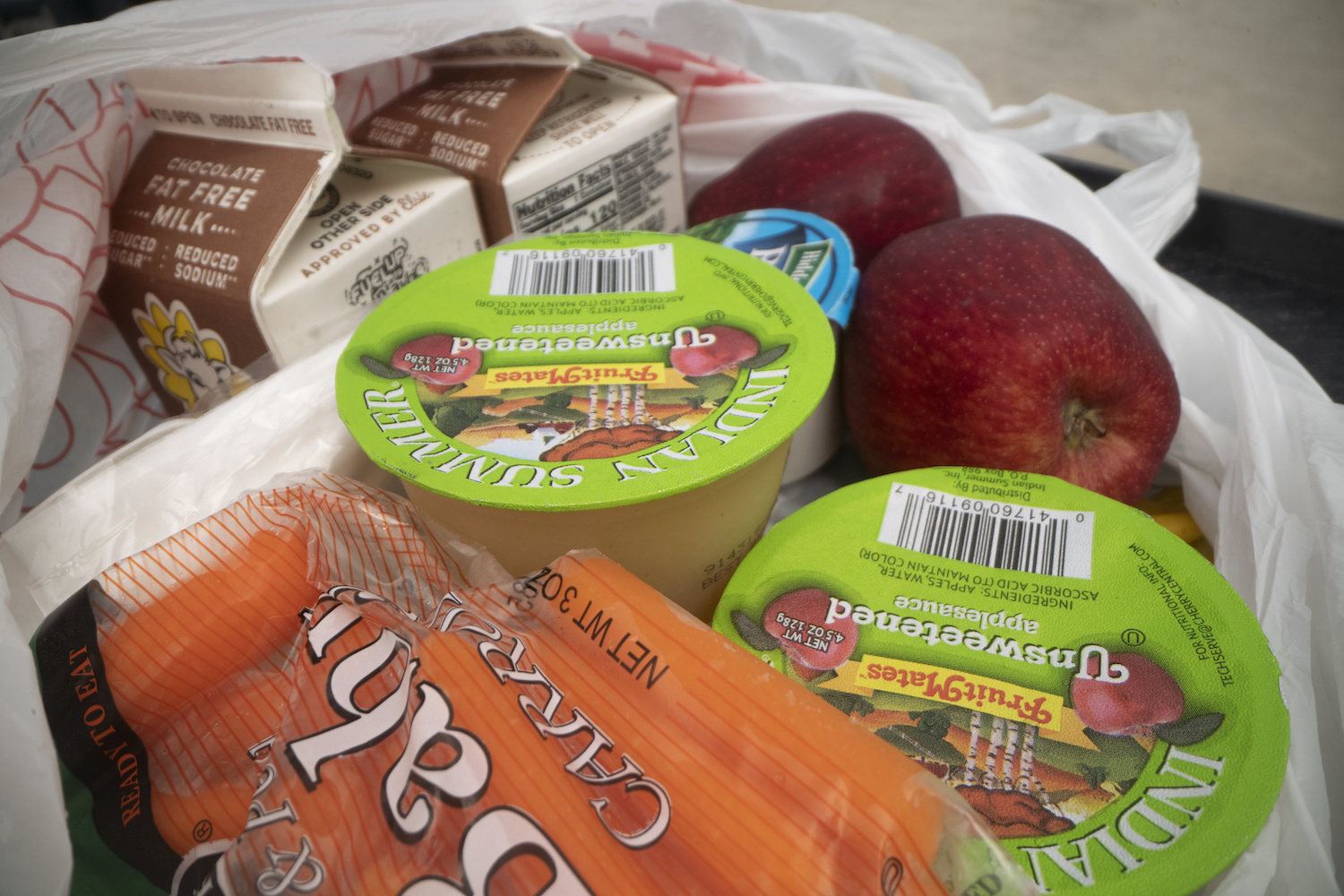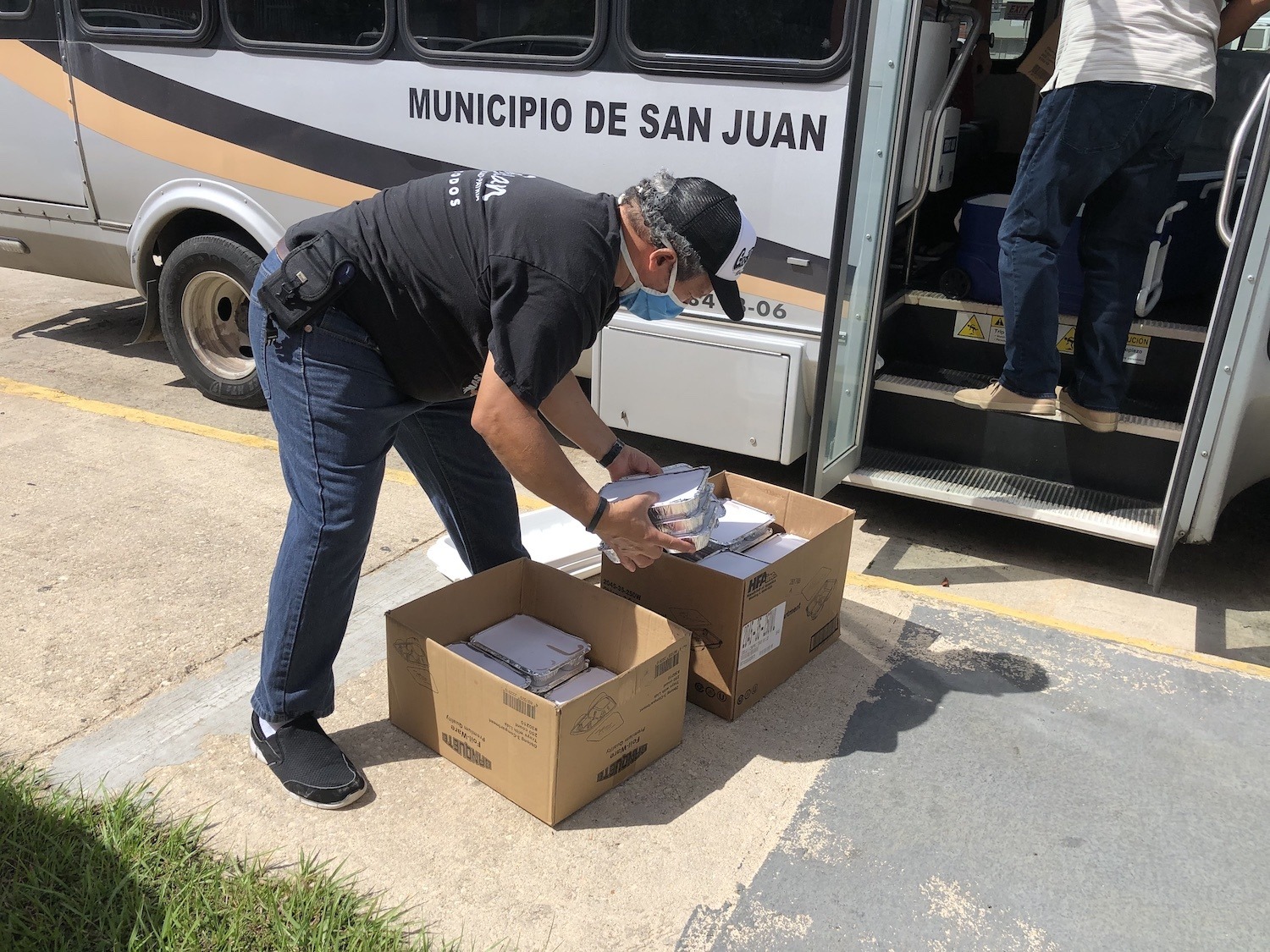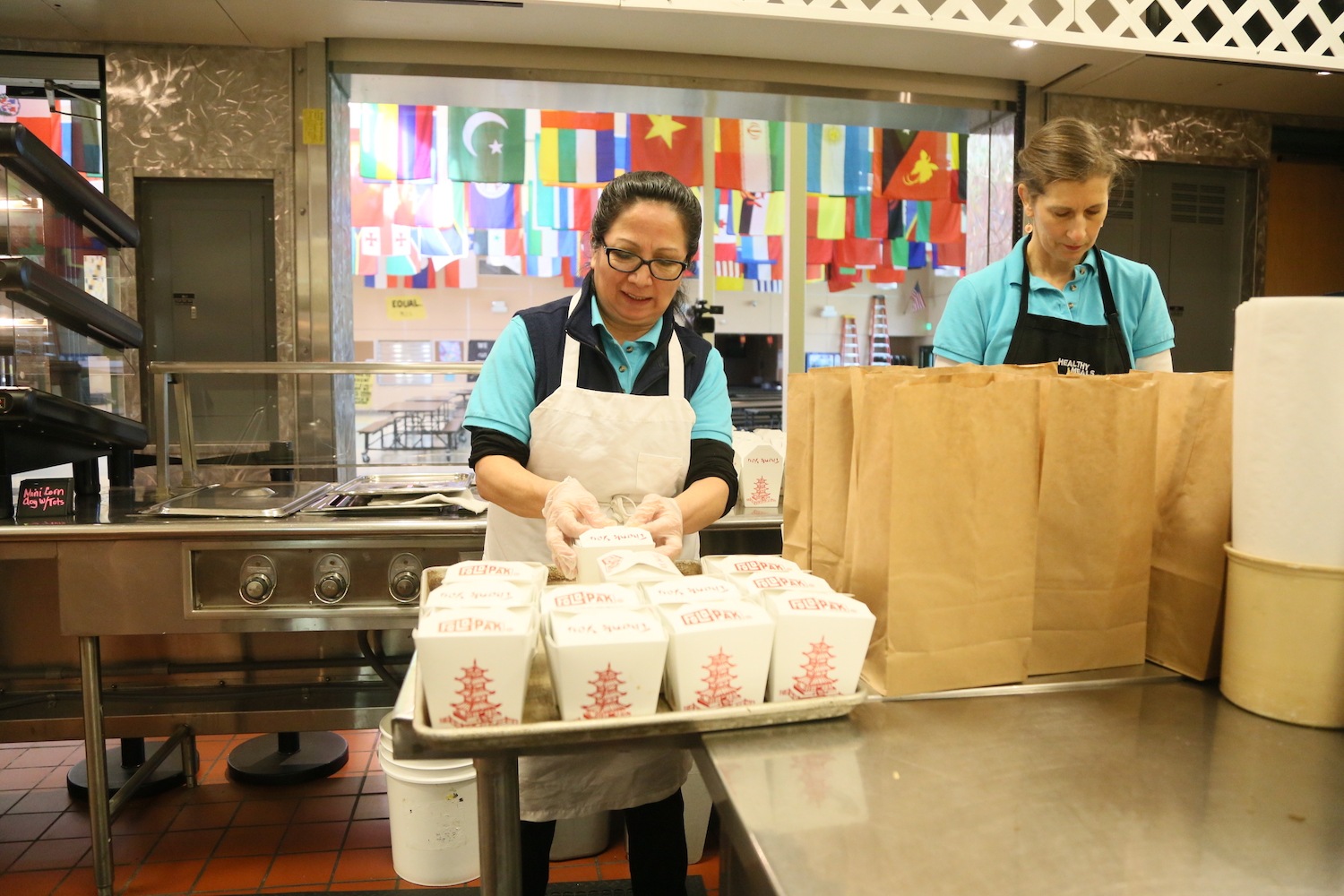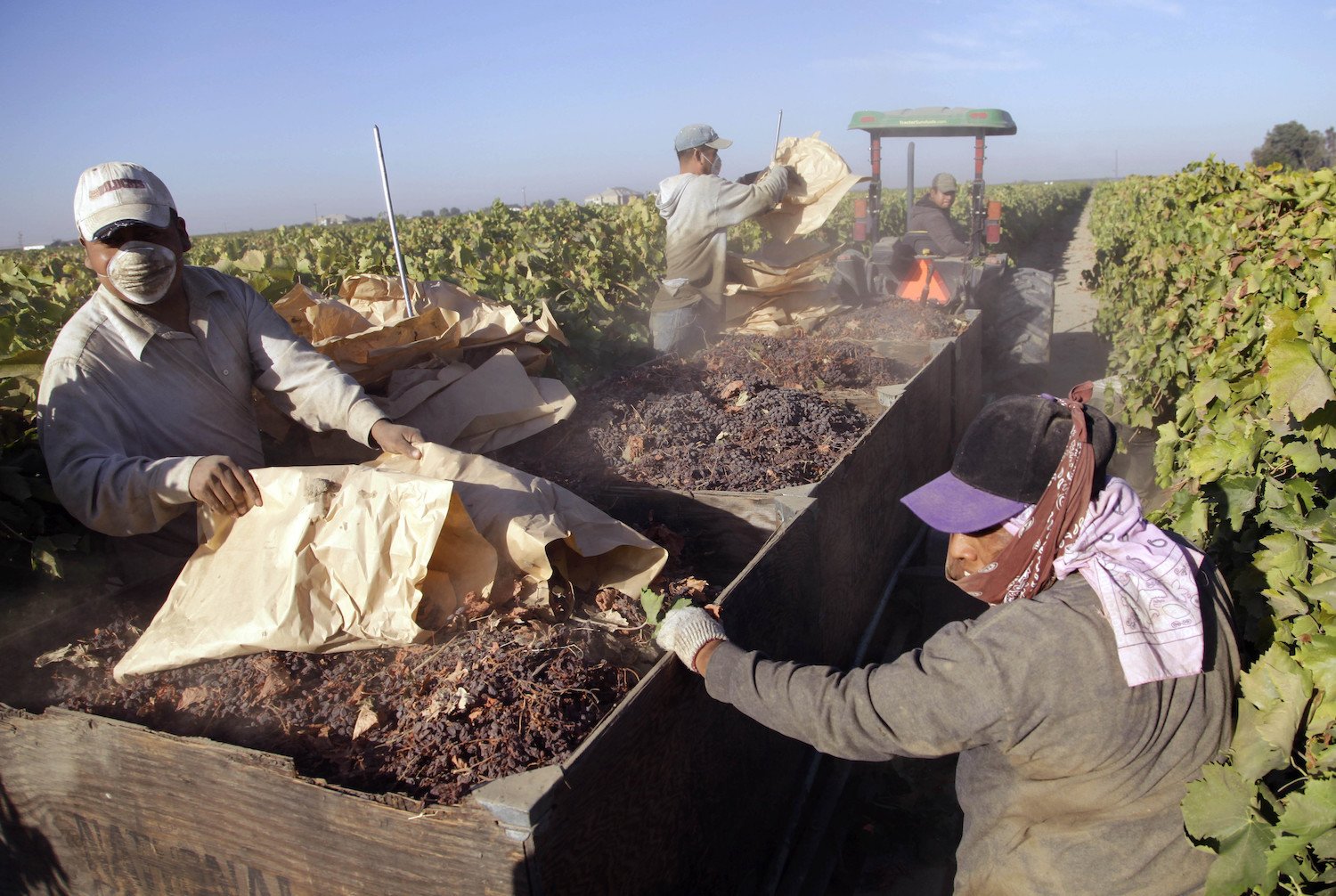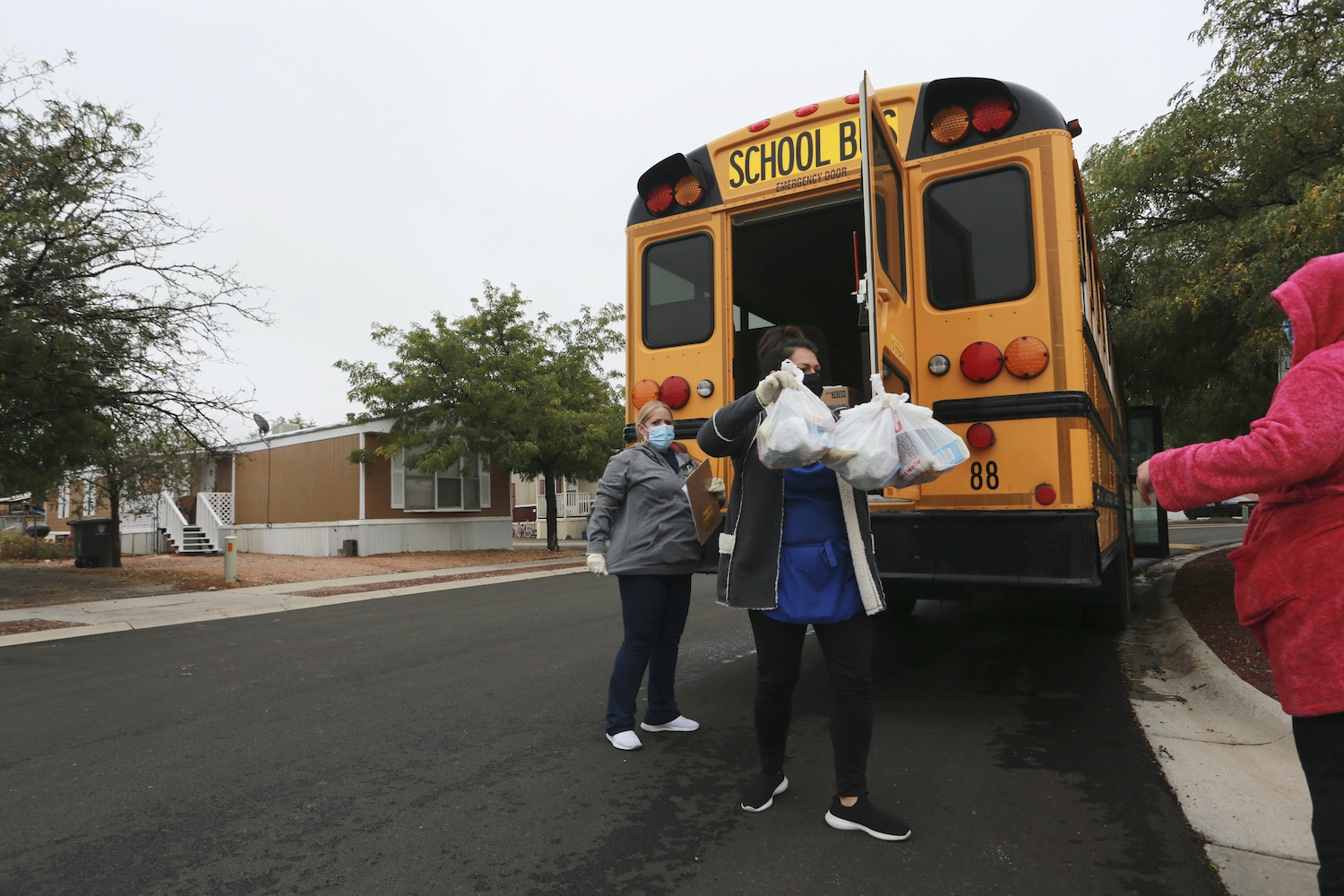
AP Photo/Cedar Attanasio
The extension comes weeks after the agency, under pressure, extended crucial waivers through December.
The United States Department of Agriculture (USDA) announced today that schools can continue offering free meals to students for the duration of the 2020-2021 academic year, whether they are learning at home or still in the classroom.
“We want to ensure that children continue to receive the nutritious breakfasts and lunches they count on during the school year wherever they are,” said USDA Secretary Sonny Perdue, according to a press release.
The announcement came after President Trump last week signed into law a continuing resolution to extend regulatory waivers that grant schools “maximum flexibility” in serving meals and designing menus.
By extending the Summer Food Service Program and the Seamless Summer Option waivers, as they are officially called, schools can also serve those free meals outside of typical meal hours, and allow parents and guardians to pick up them up.
“We want to ensure that children continue to receive the nutritious breakfasts and lunches they count on during the school year wherever they are.”
The School Nutrition Association (SNA), which represents the nation’s nutrition directors, said in a press release that the waivers are needed to ease the challenge of feeding kids during a pandemic, due to “unanticipated school closures” or changes in instruction.
The group said its members needed regulatory certainty before placing orders for the spring, and to plan menus for the months ahead. The waivers also make their work safer and easier, by allowing for the speedier distribution of grab-and-go meals and reducing in-person monetary transactions.
“Families struggling to make ends meet can be assured that their students will have access to healthy school meals, whether they are learning at home or in school,” SNA president Reggie Ross said in the release. “School meal programs can remain focused on safely meeting nutritional needs of children in their communities without having to worry about burdensome regulations.”
“School meal programs can remain focused on safely meeting nutritional needs of children in their communities without having to worry about burdensome regulations.”
The child nutrition waivers are crucially important in feeding hungry children at a time of widespread food insecurity. In late August, USDA extended the waivers through the end of 2020, saying it would allow schools to serve free meals so long “as funding allows.” As we reported, that was a complete reversal of an earlier position, which would have required schools to charge students for food and turn away any child not enrolled in the district.
Before the pandemic, children had to pay for school meals unless their family’s household income was at or below 130 percent of the poverty level. But when outbreaks forced classes online, and as unemployment surged, USDA empowered schools to become de facto community feeding centers, allowing grab-and-go distribution and for parents to pick up free food for their children.
USDA had been reimbursing those meals, which were being given to all children, even if they weren’t enrolled in the school. Without waivers, and the per-meal reimbursements, schools were briefly forced to deny food to hungry children, which a Cincinnati nutrition director called “heartbreaking.”
But now, says Diane Pratt-Heavner, an SNA spokesperson, with the extension of the nationwide waiver for the duration of the year, the “overwhelming majority of schools” are likely to serve free meals to all.

